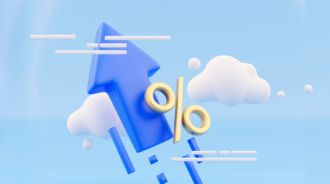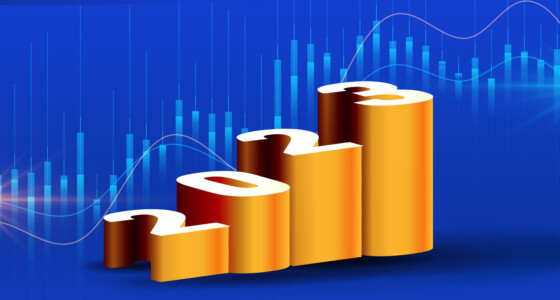

Derivatives trading only at first glance seems complicated. It is widely used in the market and is popular among traders. The article will explain derivatives trading, its advantages, and how to start.
What are the derivatives?
A derivative is an investment that is based on another asset’s value. Trading in derivatives is a two-party agreement based on an underlying financial asset or collection of assets. The underlying asset’s price is the basis for the derivative’s value. It enables traders to speculate on future price swings without actually buying the underlying asset in the hopes of profiting. In the financial market, derivatives are frequently utilized for various operations, including arbitrage, speculation, and hedging.
Types of derivatives
Derivatives derive value from an underlying asset, such as stocks, commodities, or currencies. Traders use them to speculate on price movements or as a risk management tool to hedge against potential losses. Understanding the different types of derivatives available for trading is essential for traders looking to maximize their returns and manage their risk effectively.
Forward contracts
It is an arrangement between two parties to buy or sell an underlying asset at a time in the future at a price that has been determined as of the present. These contracts are privately negotiated between the parties involved and are traded Over-The-Counter (OTC). Forward contracts are popular among traders who want to lock in a future price for an asset, and they are commonly used in the commodity markets.
Imagine that a coffee producer expects to harvest a large crop in six months and wants to lock in a price for their coffee beans. The producer could enter into a forward contract with a coffee roaster to sell their coffee at a fixed price six months from now, regardless of the market price.
Futures contracts
Similar to a forward contract, a futures contract is traded on an exchange and is standardized to remove counterparty risk. In a futures contract, the parties agree to buy or sell the underlying asset at a preset price and future date. Futures contracts must follow a daily settlement procedure, in which case the parties settle every day for a predetermined time.
For example, a farmer may sell wheat futures to lock in a price for their crop. Each day, the value of the futures contract is adjusted to reflect the current market price of wheat, and the parties settle any gains or losses. At the contract’s expiration, the parties exchange the underlying asset at the agreed-upon price.
Options contracts
The holder of an options contract has the option, but not the duty, to purchase or sell the underlying asset at a fixed value or price at a future date. Call and Put options grant the holder the right to acquire the underlying asset. Both options contracts give the holder the authority and right to sell the underlying asset.
Options contracts can be used for speculation but are also popular among traders as a hedging tool. For example, a wheat farmer could buy a put option to protect against a potential drop in the price of wheat. Suppose the price of wheat falls below the predetermined price. In that case, the farmer can sell their wheat at the higher put option price, effectively hedging against losses.
Swaps
A swap is an agreement to exchange assets or cash flows based on predetermined rules. Swaps come in various forms, such as those involving interest rates, currencies, and commodities.
Interest rate Swaps
An interest rate swap is a contractual agreement between two financial parties to exchange interest rate payments. While the other party consents to a floating interest rate, one party agrees to pay a fixed interest rate. Interest rate swaps can be used to profit from interest rate disparities or to protect against volatility.
For example, a company with a variable rate loan may want to swap it for a fixed rate loan to reduce its exposure to interest rate fluctuations. The company could enter into an interest rate swap with a counterparty with a fixed-rate loan, effectively swapping their variable-rate loan for a fixed-rate loan.
Currency Swaps
A mutual agreement between two parties to exchange cash flows in several currencies is a currency swap. Multinational organizations often use this tool to control their currency risks.
Commodity Swaps
Large corporations or financial institutions typically use commodity swaps. A producer agrees to sell a certain production volume to a buyer at a pre-agreed price over a predetermined period to hedge against spot commodity prices declining or rising.
What is the derivatives market?
The derivatives market is a market where traders trade in derivatives contracts. It has emerged as a significant and active financial market segment, allowing market participants to hedge their risks and get profits.
Traders use derivatives to speculate on future price movements of an underlying asset without actually purchasing the asset itself, hoping to make a profit. Traders or businesses also use derivatives to mitigate risk against another position taken in the market. Derivatives trading relies on a broad range of assets, enabling participants to take positions on several financial instruments, including shares, indices, bonds, interest rates, currencies, commodities, and equities.

How can you trade derivatives?
There are two different techniques to trade derivatives. Over-the-counter (OTC) derivatives are the first. The contract terms are privately negotiated (a non-standardized contract) between the parties engaged in the market. A regulated exchange that offers standardized contracts is the second way to trade derivatives. By serving as an intermediary, the exchange benefits by assisting traders in avoiding the counterparty risk associated with OTC transactions.
Contracts for difference, or CFDs, are the most commonly used derivatives traders. CFDs are agreements between two parties to pay the price difference between initiating and terminating a position on an asset. Retail traders choose CFDs because they may trade various assets, such as shares, commodities, currencies, and indices, without acquiring the underlying asset.
Derivatives trading example: hedging
Hedging is a way of protecting yourself from potential financial losses by using derivatives. Let’s say you own a small travel company that depends on fuel prices for its profits. You’re worried that your profits will be squeezed if fuel prices rise. To mitigate this risk, you enter into a futures contract with a fuel supplier, agreeing to purchase fuel at a fixed price for a specific delivery date in the future.
Fast forward to that delivery date, and the spot price of fuel has indeed skyrocketed. But because you’ve locked in a lower price in your futures contract, you can still purchase fuel at the lower price and protect your profits. On the other hand, the supplier must take advantage of the opportunity to sell fuel at a higher price on the spot market.
Derivatives trading and leverage
Traders utilize derivatives to boost leverage in addition to hedging. Due to the ability to take a more significant position in essential markets than they could otherwise afford, both potential gains and losses are increased.
Leverage, for example, enables a trader to purchase shares of a stock for a small fraction of their actual value. The rewards traders receive from trading derivatives increase in a volatile market since the underlying asset’s price movement is more pronounced. Because of this, traders use the Chicago Board Options Exchange Volatility Index (VIX) to track the turbulence of particular financial markets.
Advantages of derivatives
Consider the advantages of derivatives trading:
- Hedging
Derivatives can be used to manage risks associated with the underlying assets. For example, a farmer can use derivatives to protect against the price fluctuations of crops. Similarly, investors can use derivatives to hedge against risks associated with stocks and bonds.
- Leverage
Derivatives allow investors to gain exposure to an underlying asset without owning it. It can lead to much higher potential gains than traditional investments like stocks and bonds.
- Diversification
Derivatives allow investors to gain exposure to various assets, including currencies, commodities, and interest rates. This diversification can reduce overall portfolio risk.
Disadvantages of derivatives
Now let’s get acquainted with the disadvantages of trading derivatives:
- Counterparty risk
Since derivatives are essentially contracts between two parties, one side can break their obligations at any time. This risk is particularly acute in over-the-counter (OTC) derivatives, which are not traded on an exchange.
- Market risk
Derivatives are often used to speculate on the future price movements of assets, which can be highly volatile and unpredictable. If the investor’s prediction turns out to be incorrect, they may suffer substantial losses.
- Complexity
Derivatives require specialized knowledge and expertise to understand and trade effectively. Moreover, the fees and commissions associated with derivatives can be much higher than those for traditional investments like stocks and bonds.
- Over-leveraging
Derivatives allow investors to get exposure to assets without putting up the full value of the underlying asset. It can result in much higher potential profit and losses if the market moves against the investor.
The bottom line
In conclusion, derivatives can be a powerful tool for managing risk and accessing leverage. Still, they come with significant risks and disadvantages that should be considered. You should carefully consider their risk tolerance, investment goals, and level of expertise before engaging in derivatives trading. Additionally, you should seek out a reputable broker and conduct thorough research to understand the terms and risks of any derivative.











